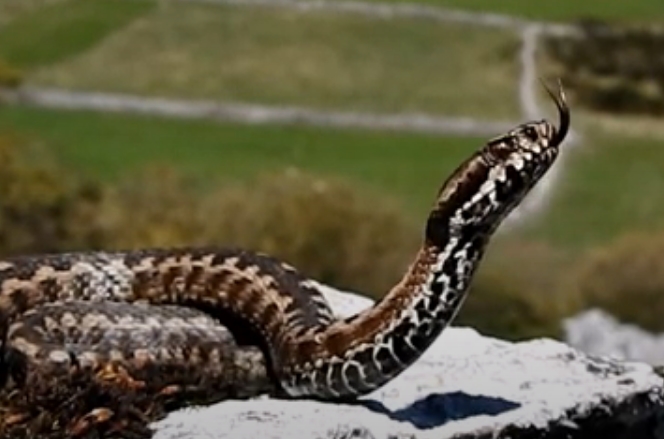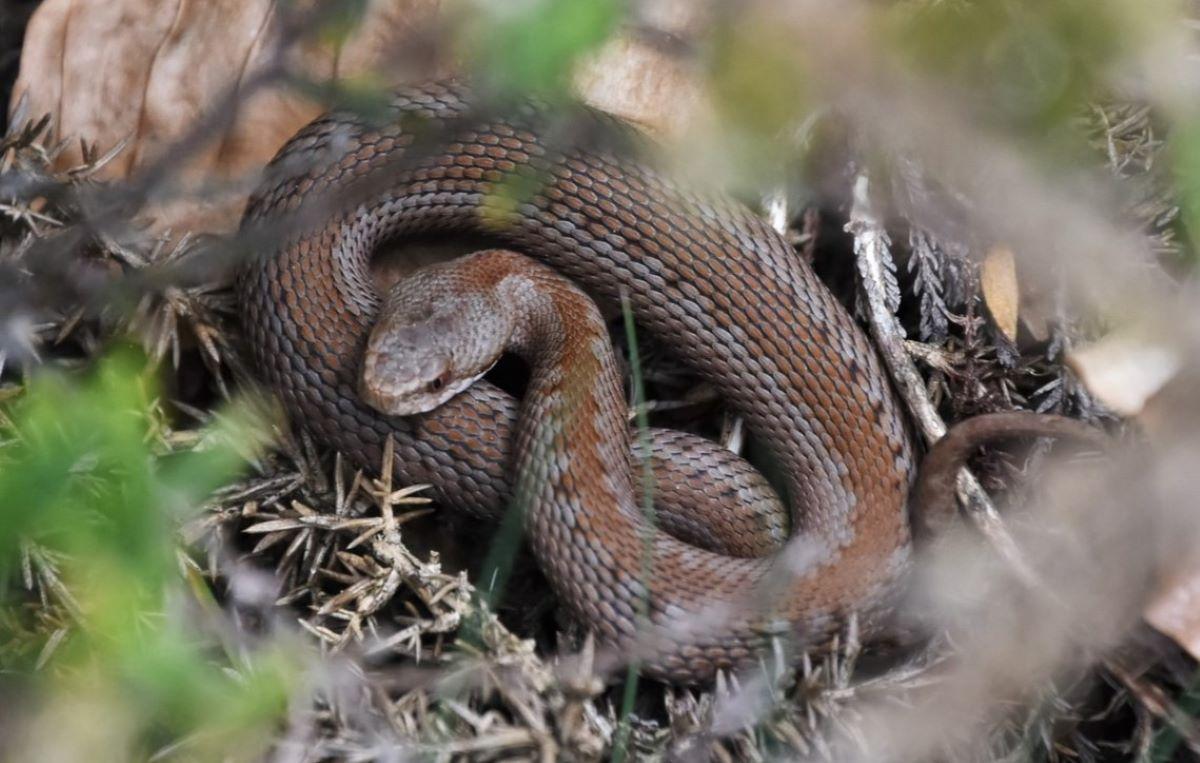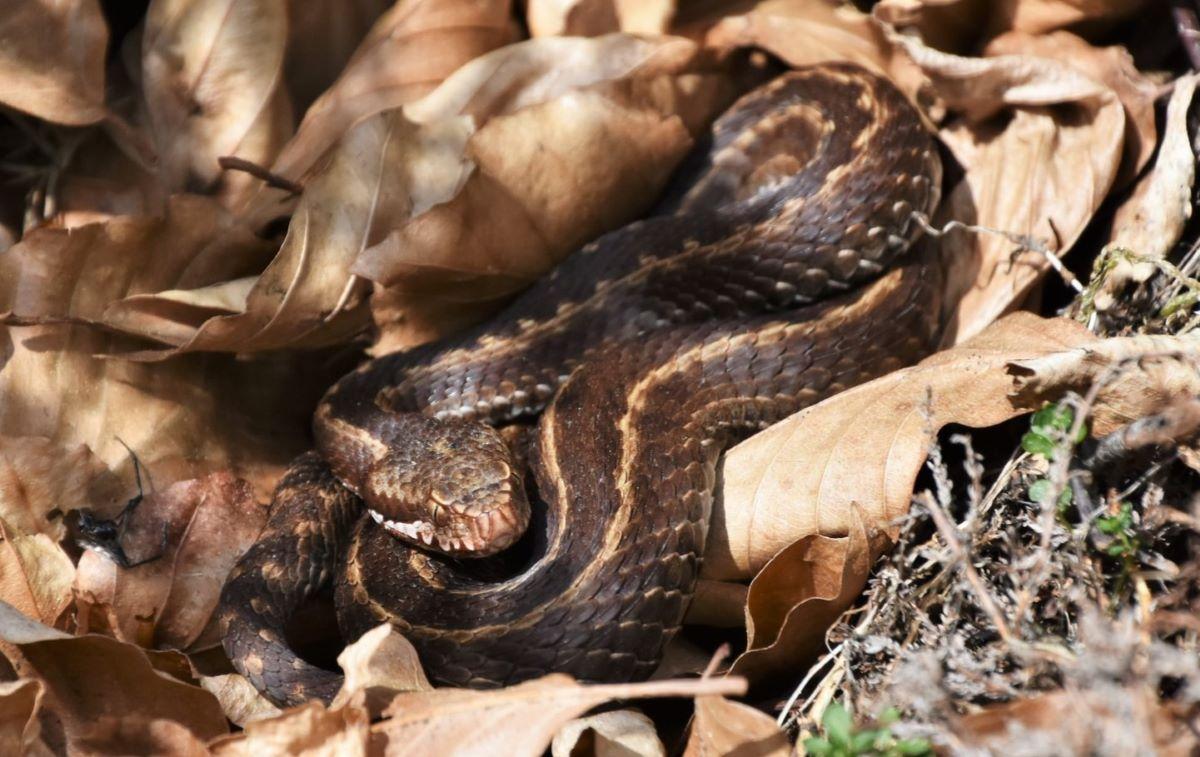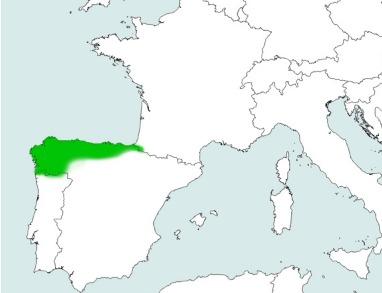Seoane's viper or Pyrenean viper
Vipera seoanei
Vipère de Séoane
Scarce and localised
the Seoane's viper is only to be found in the north of the Iberian Peninsula, (Spain and Portugal), and in the extreme southwest of France near the northern border with Spain.
It is the only viper present in its Iberian distribution with the exception of the South west of France where it can overlap with the Asp viper.
They can be found up to an altitude of 1200m in Portugal and up to 1900m in the mountains of the Cantabrian coast. In France they reach a maximum altitude of 1250m in the Pyrenees.
Seoane's Viper is a snake whose length generally varies
between 40 and 50 cm, (65 cm maximum), with females being larger than males. As is the case with all European vipers they have eyes with vertically slit pupils, a relatively triangular head, (but less wide than the other vipers of France), and a tail which tapers quite quickly. They also have thicker scales above the eyes giving the impression of eyebrows. The scales are quite strongly keeled and even ribbed, rather oval in shape and rather large in size, giving a rough appearance to the skin.
Possible confusion with an Asp viper?
It is a species with an extraordinarily high variability in its colours and patterns which is only an identification issue in France where Asp vipers are present however unlike the Asp viper the tip of the snout is not turned up and the labials are clearly marked.
Diet is about 80% small rodents
and the remainder is mainly lizards and small birds. Juvenile snakes eat mainly lizards.
In normal or slightly favourable climatic conditions adult females will reproduce every year. When the climatic conditions during the year are colder than usual and the activity period becomes shorter, the females will reproduce every second year. The young, (between 3 and 10), are born between the end of August and the beginning of September. They shed their skin in the first few days following birth and commence feeding.
Hibernation tends to take place between November and March.
A bite from a Seoane's Viper is not normally life threatening for a human being
except perhaps for a small likelihood in the cases of elderly people, children or unhealthy persons. However, a bite should always be monitored by a doctor and treated in a hospital. The French snakes have the lowest toxicity.
As with all snakes in France they are a fully protected species and are in decline throughout their natural range due to increasing human activity be that tourism or agriculture.





